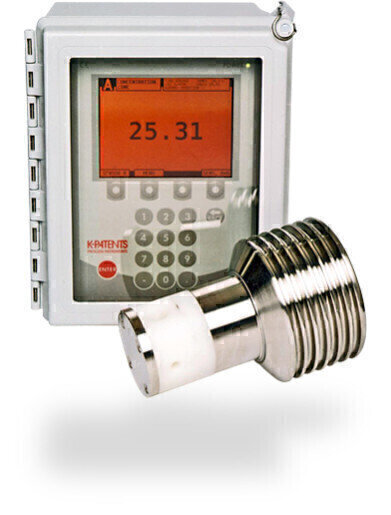Water/Wastewater
Process Refractometer is a New and Economical Way to Monitor TOC in Effluent
May 04 2013
Excess organics or excessive Total Organic Carbon (TOC) content, e.g. alcohols, proteins, sugars, fats, etc. in various wastewater streams in the corn sweetener and beer brewing industries can incur fines and penalties. In severe cases the plant can even be closed.
As these effluent streams typically contain high levels of TOC (up to 10,000 PPM) the Refractive Index technique that K-Patents’ refractometer is based on, has proven to be a very successful measurement method for this purpose.
Ion exchange is a filtration process aimed at removing soluble ionised substances. For the purposes, ion exchange resins in columns are used in industrial plants.
The solution to be treated, e.g. sugar solution, flows through the resin in the exchanger column. As there are cations and anions in the solution, two different types of resins must be used: a cation exchanger and an anion exchanger. The cation resin is used in the hydrogen form (H +), thus, it must be regenerated with an acid, in this case, with a strong Hydrochloric acid HCl. HCl controls the pH of process water streams providing water purity, demineralises water and rinses cations from the resins. The cation resin removes hardness from water since it is also alkaline.
The anion resin is used in hydroxyl form (OH -), thus, it must be regenerated with a strong alkali NaOH. Alkaline environment softens the solution by removing strong acids.
This combined arrangement produces pure solution. After the solution has been demineralised, sugar can be removed from the process, and produced in the process sweet water forwarded to the storage tank.
TOC has traditionally been measured both on- and off-line. Conductivity and non-dispersive infrared (NDIR) are the two common detection methods used in on-line TOC analysers. These analysers are expensive to maintain and calibrate, and there can be frequent breakdowns in their operation.
Laboratory off-line samples and testing are used to confirm the TOC analyser readings. However, if the sampling frequency for the laboratory analysis is too small, potential TOC excursions can be missed.
To control the effluent effectively and provide the wastewater treatment plant with warning of exceptional loads, the measuring instrument used must be reliable and remain in-line at all times. K-Patents refractometer provides reliable in-line real-time measurement of the dissolved solids before the sewage proceeds to the treatment plant. Wastewater treatment plant knows about the incoming TOC and can keep treatment process in proper operation and compliance.
K-Patents process refractometers provide reliable measurement for alarming of incoming dissolved solids (indication of high organics). For instance, alarms can be set at 6,500 PPM and the pump shut-off at 7,500 PPM.
K-Patents Teflon Body Refractometer PR-23-M provides in-line measurements of the effluent sewer at its dispersing outlet to the treatment plant. The refractometer can read 0-1% total dissolved solids that correlate with 0-10,000 PPM TOC scale.
For over 30 years, K-Patents (Finland), has been specialising in in-line liquid concentration measurement instruments for industrial users and OEMs in the chemical, oil and petrochemical, pulp and paper, food, semiconductor and pharmaceutical industries.
Digital Edition
AET 28.4 Oct/Nov 2024
November 2024
Gas Detection - Go from lagging to leading: why investment in gas detection makes sense Air Monitoring - Swirl and vortex meters will aid green hydrogen production - Beyond the Stack: Emi...
View all digital editions
Events
Dec 02 2024 London, UK
Dec 03 2024 Dusseldorf, Germany
Dec 11 2024 Shanghai, China
Jan 12 2025 Abu Dhabi, UAE
Jan 14 2025 Abu Dhabi, UAE














.jpg)




